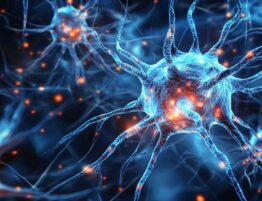Cancer is one of the most serious and potentially fatal diseases for which there is no cure. Every year, it takes the lives of thousands of people. Today, we will explore one of the most widespread types – breast cancer. There is a broader range of treatment options. They are often less aggressive. Early detection also minimizes the cancer spreading to other body parts. It reduces the severity of the disease and the need for more extensive treatments.
Regular screening includes mammograms and self-examinations. This is essential for catching cancer at its earliest stage. Public awareness and education about the significance of early diagnosis are vital. It encourages individuals to seek breast cancer treatment promptly. This leads to timely intervention and better prognosis. Thus, the importance of early diagnosis needs to be more important. This is a critical factor in improving the quality of life. It also helps with survival rates for those affected by cancer.
What is breast cancer?
Cancer originates in the cells of the breast. This is most common in the ducts carrying milk to the nipple (ductal carcinoma) or the lobules. These glands produce milk (lobular carcinoma). It occurs when abnormal cells in the breast grow uncontrollably. This forms a tumor that can be detected through imaging or felt as a lump. These cancerous cells have the potential to invade nearby tissues. It spreads to other body parts through the lymphatic system or bloodstream. This process is known as metastasis.
Genetic, hormonal, and environmental factors significantly influence cancer development. Some individuals may have inherited genetic mutations. They are BRCA1 or BRCA2. It substantially increases their risk. Hormonal changes also are critical in the development of the disease. Those related to estrogen exposure are the most important.
Breast cancer is categorized into several types based on its characteristics. They are hormone receptor status and HER2 status. It affects the tumor’s behavior and the treatment approach. Understanding the biology of cancer is crucial for developing targeted therapies. It also helps to improve the prognosis for those diagnosed with this disease.
Common Signs and Symptoms of Breast Cancer
Recognizing signs beyond changes in breast appearance, skin, or sensation is essential. Awareness of these symptoms can lead to earlier detection and more effective breast cancer treatment. Here are the common signs:
- Lumps or Thickening: One of the most common signs is the presence of tissue in the breast or underarm area. These lumps can vary in size and may be painless.
- Nipple Retraction or Inversion: A sudden change. The nipple may become inverted or pull inward. It can be another sign.
- Swelling of the Breast: Even without a distinct lump, this could be a breast cancer symptom. Individuals mustn’t ignore this sign.
- Pain in the Breast or Nipple: Persistent pain in the breast or nipple may not relate to the menstrual cycle. It might be an indicator of signs of breast cancer. A healthcare provider should check such pain.
Changes in Breast Appearance
Changes in breast appearance can be a significant sign. This is when identifying potential indicators of cancer. Here are some common changes to watch for:
- Visible Dimpling or Puckering: The development of dimples, ridges, or puckering on the surface of the breast. They are similar to the texture of an orange peel. Such symptoms can be a concerning breast cancer sign.
- Nipple Position Changes: A shift in the position of the nipple can be a cause for concern. This is one nipple pointing in a different direction than usual. It may become asymmetrical with the other nipple.
- Visible Veins: The appearance of veins on the surface of the breast may suggest an underlying issue. This is mainly if they are more noticeable than usual.
Changes in the Skin
Changes in the skin can be essential signs and should be considered. Here are some key cancer symptoms related to skin changes:
- Redness or Rash: Unexplained blotchy areas on the breast can be potential signs of this illness. They are particularly inflammatory to breast cancer.
- Thickening of the Skin: The skin of the breast may become thickened or stiff. It often resembles the texture of an orange peel (peau d’orange). This is a concerning breast cancer symptom.
- Sores or Ulcers: The appearance of sores, ulcers, or any open wound on the breast can be a warning sign. This is especially true if they don’t heal.
Sensation Changes
Sensation changes in the breast can be significant signs of cancer. Individuals shouldn’t ignore them. Here are some key symptoms related to sensation:
- Unexplained Pain: Some patients experience persistent, unexplained discomfort in the breast or nipple. It may be localized and not related to the menstrual cycle. Such pain can be one of the early signs of cancer.
- Nipple Sensitivity: An increase in nipple discomfort or an unusual sensation can be a concerning symptom. It may be one of the possible signs of cancer.
- Nipple Discharge: This may be an unusual discharge, especially if it is clear, bloody, or occurs without squeezing. It is a potential breast cancer symptom that warrants medical evaluation.
Monitoring these sensation changes is crucial. They can be early signs of breast cancer that require prompt medical evaluation.
Less Common Symptoms
The most recognized cancer symptoms often involve lumps or changes in breast appearance. There are less common manifestations. They can also indicate the presence of the disease. These signs may be less widely known but are equally essential to recognize. Awareness of these less common manifestations can lead to earlier detection. It also causes more effective treatment. Understanding the full spectrum of potential signs ensures a more comprehensive approach. It helps to identify and address breast cancer.
Swollen lymph nodes in the armpit or collarbone area
Swollen lymph nodes in the armpit or collarbone area can be an essential indicator of cancer. Here are some details to consider:
- Armpit Swelling: Enlarged lymph nodes in the axillary lymph nodes may feel tender or hard lumps. It can be one of the first signs of cancer if the cancer has spread from the breast tissue.
- Collarbone Swelling: Lumps near the supraclavicular lymph nodes can also be a significant sign. This area might feel swollen or tender. It could indicate that breast cancer has metastasized.
- Unexplained Tenderness: Persistent pain in these areas may be without a clear cause. It should be evaluated. It might have a relation to signs of breast cancer.
- Fixed or Hard Lumps: Lumps in the lymph nodes may feel fixed, rigid, or immovable. They can be particularly concerning and warrant further investigation.
Persistent breast pain or discomfort
Persistent breast pain or discomfort can sometimes be a sign of cancer. Here are several vital points to consider:
- Unrelated to Menstrual Cycle: Pain or discomfort in the breast may occur independently of your menstrual cycle. It can cause concern. This type of persistent pain is not typical for cyclical breast pain.
- Dull or Sharp Pain: Persistent dull or sharp pain in the breast. It doesn’t improve over time. This can be a potential breast cancer symptom.
- Localized Pain: Pain localized to a specific breast area, rather than general soreness, can be an important symptom. It may be associated with a lump or other abnormalities.
A healthcare professional should evaluate such persistent pain or discomfort. It will help to determine the underlying cause and rule out signs of breast cancer.
Any other unexplained change in the breast or nipple
Unexplained changes can be significant cancer symptoms. Here are some fundamental changes to watch for:
- New Lumps: Any new lump or mass in the breast or near the nipple that persists is a potential sign of cancer.
- Size or Shape Changes: Noticeable alterations of one breast may show an underlying issue. They are one breast becoming visibly more significant or misshapen.
- Nipple Sores: The presence of ulcers or sores on the nipple that does not heal could indicate breast cancer.
Risk Factors and Prevention
Understanding the risk factors for cancer and adopting preventive measures is vital. It can significantly impact health and reduce the likelihood of developing the disease. Here’s a detailed look at various risk factors:
- Genetic Mutations: Inherited mutations in BRCA1 and BRCA2 increase cancer risk.
- Family History: A family history of cancer, especially in first-degree relatives. It can elevate risk.
- Hormonal Factors: Early menstruation (before age 12), late menopause (after age 55). Hormone replacement therapy can increase risk.
- Lifestyle Factors: Alcohol consumption, smoking, and obesity. They are associated with a higher risk of developing breast cancer symptoms.
- Radiation Exposure: Previous radiation therapy to the chest area is a risk factor. This is mainly during adolescence or early adulthood.
Now, let’s talk about prevention strategies. Here are they:
- Regular Screening: Annual mammograms and clinical breast exams can help detect cancer early.
- Healthy Lifestyle: This is essential to maintaining a healthy weight and limiting alcohol intake. Avoiding smoking can reduce risk.
- Exercise: Regular physical activity is associated with a lower cancer risk.
- Diet: Eating a balanced diet rich in fruits, vegetables, and whole grains supports health. It also may lower risk.
Individuals must understand these risk factors and implement preventive measures. So they can take proactive steps toward reducing their risk of breast cancer.
The Importance of Early Detection
Early detection is crucial for improving treatment outcomes and increasing survival rates. Here’s why early detection is so important:
- Improved Prognosis: Identifying cancer early often means the disease has not spread. It leads to a better prognosis and a higher chance of successful cancer treatment.
- More Treatment Options: Early detection typically allows for broader treatment methods. They include less invasive procedures. This can lead to more personalized and influential breast cancer treatment plans.
- Reduced Treatment Intensity: Chemotherapy or radiation may be less aggressive. They minimize side effects and improve quality of life.
- Lower Risk of Metastasis: Detecting cancer early helps prevent metastasis. It can complicate treatment and decrease survival rates.
- Increased Survival Rates: Early-stage cancer has a significantly higher survival rate. This is the more advanced stage. Regular screenings of signs of breast cancer can lead to earlier diagnosis and better outcomes.
Breast cancer treatment and methods of treatment
Treatment involves various methods tailored to the specific type and stage of cancer. Patients’ overall health also plays a role. Here’s an overview of standard breast cancer treatment options:
- Surgery: Lumpectomy removes the tumor and a small margin of surrounding tissue. It is often recommended for early-stage cancer. Mastectomy is the removal of one or both breasts. It may be total (removal of the entire breast) or partial (removal of part of the breast). The extent of the surgery depends on the stage of the cancer. Sentinel Node Biopsy removal of a few lymph nodes to check for cancer spread. It is often performed alongside other surgeries.
- Radiation Therapy: Targeted radiation delivered from outside the body. It helps to destroy the remaining cancer cells in the breast or chest wall. Internal radiation therapy is where radioactive seeds are directly placed near the tumor site. This is typically used in conjunction with lumpectomy.
- Immunotherapy: Checkpoint Inhibitors help the immune system recognize and attack cancer cells. They are used in some instances of triple-negative breast cancer.
- Chemotherapy: Use of drugs to kill cancer cells throughout the body. It is often used before surgery (neoadjuvant) or after surgery (adjuvant). This helps to reduce the risk of recurrence.
- Hormone Therapy: Tamoxifen blocks estrogen’s effects on cancer cells. Anastrozole lowers estrogen levels in postmenopausal women. This is used in hormone receptor-positive cancers.
- Targeted Treatment: HER2 Inhibitors are trastuzumab (Herceptin). It targets the HER2 protein found in some breast cancer cells. CDK4/6 Inhibitors are palbociclib that target proteins involved in cancer cell growth.
- Bone-directed Therapy: Bisphosphonates help prevent bone complications in patients with breast cancer. They have spread to the bones.
The choice of breast cancer treatment is based on its type, stage, and specific characteristics. Combining these methods in a personalized treatment plan can optimize outcomes. It also manages the disease effectively. Contact us to get professional help.












Please, leave your review
Write a comment: